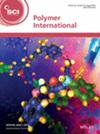求助PDF
{"title":"先进的3d打印轻量化环保竹纤维粉和chapati厨余粉基复合材料的设计与研究","authors":"Kajal Yadav, Sarika Verma","doi":"10.1002/pi.6792","DOIUrl":null,"url":null,"abstract":"<p>Pursuing sustainable and lightweight materials has increased interest in extrusion-based 3D printing of biocomposites for various applications. This study focused on designing and studying a novel advanced 3D-printed lightweight bamboo and chapati food waste powder-based composite material. Bamboo fiber powder and chapati food waste powder derived from natural sources and sodium alginate, a biodegradable polymer from brown algae, were used to develop eco-friendly composites. The developed 3D-printed samples were evaluated for morphological structure by scanning electron microscopy, X-ray diffraction, differential scanning calorimetry, Raman spectroscopy and mechanical analysis. Scanning electron microscopy confirmed the uniform distribution of bamboo fiber powder and chapati food waste powder within the sodium alginate matrix. The X-ray diffraction peaks confirmed the semicrystalline structures with characteristic peaks for sodium alginate, bamboo fiber powder and chapati food waste powder. The Raman results confirmed the bamboo fiber powder and chapati food waste powder content in the 3D-printed composites. The incorporation of bamboo fiber powder with different concentrations enhanced the mechanical properties with an increase in tensile strength. This work highlights the development of advanced 3D-printed lightweight bamboo and starch powder-based composite materials, offering a promising pathway toward sustainable materials. © 2025 Society of Chemical Industry.</p>","PeriodicalId":20404,"journal":{"name":"Polymer International","volume":"74 9","pages":"858-866"},"PeriodicalIF":3.6000,"publicationDate":"2025-07-01","publicationTypes":"Journal Article","fieldsOfStudy":null,"isOpenAccess":false,"openAccessPdf":"","citationCount":"0","resultStr":"{\"title\":\"Designing and study of advanced 3D-printed lightweight and eco-friendly bamboo fiber powder and chapati food waste powder based composite material\",\"authors\":\"Kajal Yadav, Sarika Verma\",\"doi\":\"10.1002/pi.6792\",\"DOIUrl\":null,\"url\":null,\"abstract\":\"<p>Pursuing sustainable and lightweight materials has increased interest in extrusion-based 3D printing of biocomposites for various applications. This study focused on designing and studying a novel advanced 3D-printed lightweight bamboo and chapati food waste powder-based composite material. Bamboo fiber powder and chapati food waste powder derived from natural sources and sodium alginate, a biodegradable polymer from brown algae, were used to develop eco-friendly composites. The developed 3D-printed samples were evaluated for morphological structure by scanning electron microscopy, X-ray diffraction, differential scanning calorimetry, Raman spectroscopy and mechanical analysis. Scanning electron microscopy confirmed the uniform distribution of bamboo fiber powder and chapati food waste powder within the sodium alginate matrix. The X-ray diffraction peaks confirmed the semicrystalline structures with characteristic peaks for sodium alginate, bamboo fiber powder and chapati food waste powder. The Raman results confirmed the bamboo fiber powder and chapati food waste powder content in the 3D-printed composites. The incorporation of bamboo fiber powder with different concentrations enhanced the mechanical properties with an increase in tensile strength. This work highlights the development of advanced 3D-printed lightweight bamboo and starch powder-based composite materials, offering a promising pathway toward sustainable materials. © 2025 Society of Chemical Industry.</p>\",\"PeriodicalId\":20404,\"journal\":{\"name\":\"Polymer International\",\"volume\":\"74 9\",\"pages\":\"858-866\"},\"PeriodicalIF\":3.6000,\"publicationDate\":\"2025-07-01\",\"publicationTypes\":\"Journal Article\",\"fieldsOfStudy\":null,\"isOpenAccess\":false,\"openAccessPdf\":\"\",\"citationCount\":\"0\",\"resultStr\":null,\"platform\":\"Semanticscholar\",\"paperid\":null,\"PeriodicalName\":\"Polymer International\",\"FirstCategoryId\":\"92\",\"ListUrlMain\":\"https://scijournals.onlinelibrary.wiley.com/doi/10.1002/pi.6792\",\"RegionNum\":4,\"RegionCategory\":\"化学\",\"ArticlePicture\":[],\"TitleCN\":null,\"AbstractTextCN\":null,\"PMCID\":null,\"EPubDate\":\"\",\"PubModel\":\"\",\"JCR\":\"Q2\",\"JCRName\":\"POLYMER SCIENCE\",\"Score\":null,\"Total\":0}","platform":"Semanticscholar","paperid":null,"PeriodicalName":"Polymer International","FirstCategoryId":"92","ListUrlMain":"https://scijournals.onlinelibrary.wiley.com/doi/10.1002/pi.6792","RegionNum":4,"RegionCategory":"化学","ArticlePicture":[],"TitleCN":null,"AbstractTextCN":null,"PMCID":null,"EPubDate":"","PubModel":"","JCR":"Q2","JCRName":"POLYMER SCIENCE","Score":null,"Total":0}
引用次数: 0
引用
批量引用




 求助内容:
求助内容: 应助结果提醒方式:
应助结果提醒方式:


